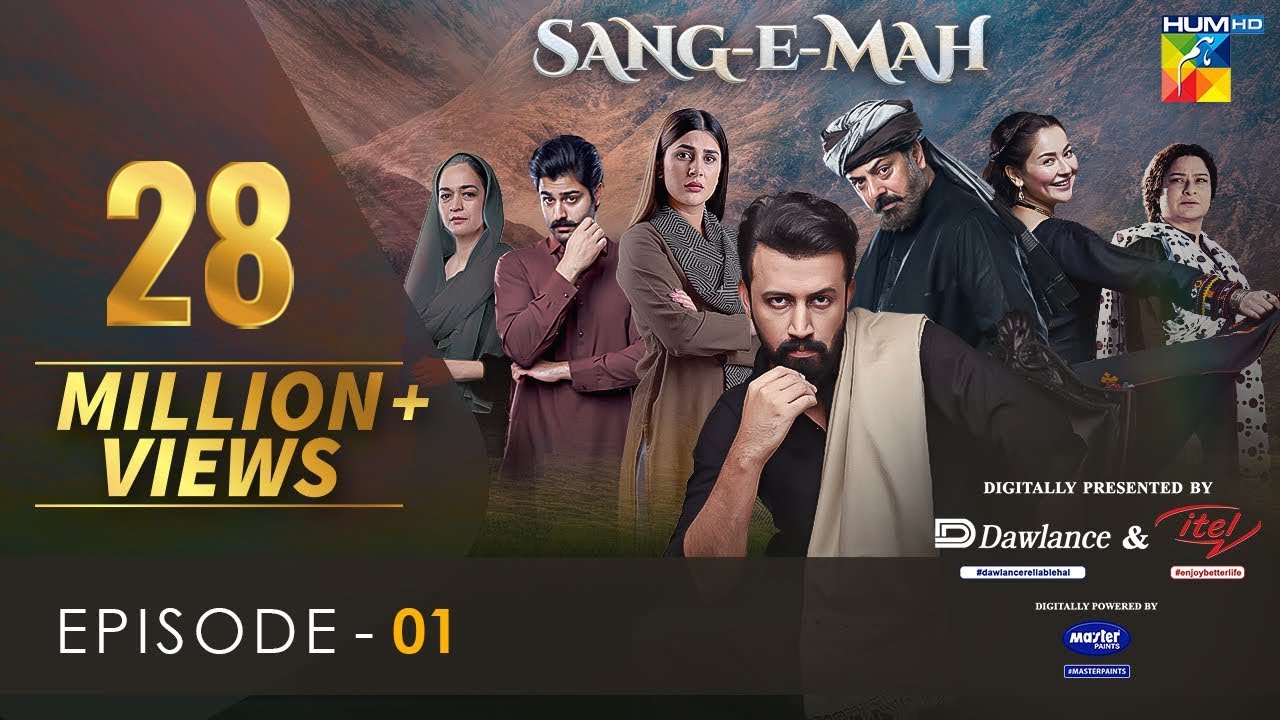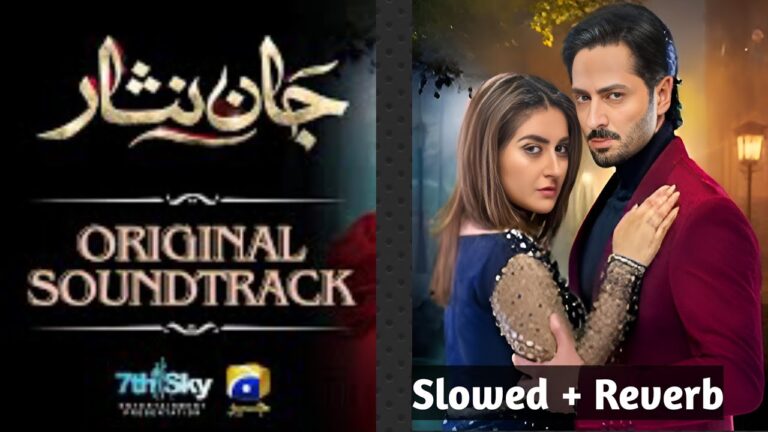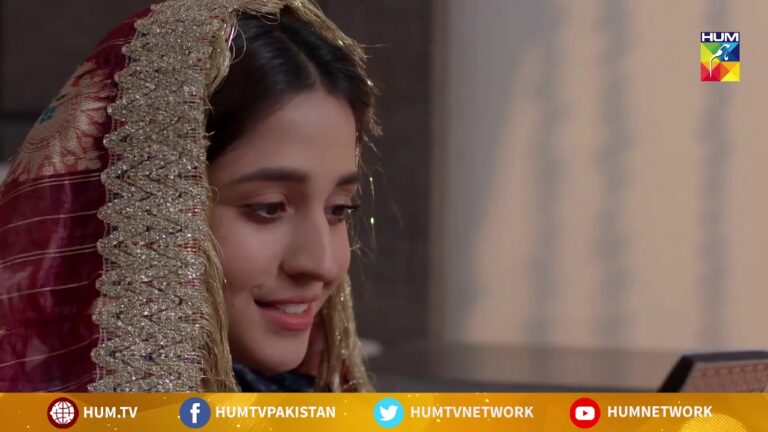Sang-e-Mah Drama Review: Sang-e-Mah, a 2022 Pakistani drama series, captivated audiences with its heart-wrenching narrative, powerful performances, and exploration of complex cultural themes. This review delves into the series’ strengths, weaknesses, and enduring impact on viewers.
Plot and Themes:
Set in the tribal regions of Pakistan, Sang-e-Mah unfolds the story of the Malik family, bound by tradition and honor. Hilmand (Atif Aslam), a young man yearning for love and education, finds himself entangled in a web of family conflicts and an unrequited love for Zarguna (Kubra Khan). The series explores themes of love and loss, inter-family feuds, the weight of tradition, and the struggle for individual freedom within a patriarchal society.
Strengths:
- Compelling Narrative: The script, penned by Mustafa Afridi, takes viewers on an emotional rollercoaster. It skillfully weaves together elements of romance, family drama, and social commentary, keeping the audience invested throughout.
- Strong Female Characters: Sang-e-Mah features well-developed female characters who defy traditional stereotypes. Zarguna, despite societal limitations, strives for agency and education, while Gul Meena (Sania Saeed) challenges her husband’s outdated views.
- Authentic Portrayal of Culture: The series offers a glimpse into the customs and traditions of the Pakistani tribal regions, adding depth and authenticity to the narrative. The use of local dialect further enhances the immersive experience.
- Superb Performances: The cast delivers exceptional performances, particularly Atif Aslam, who embodies Hilmand’s vulnerability and frustration with remarkable nuance. Nauman Ijaz and Sania Saeed also shine, portraying the complex dynamics within the Malik family.
Weaknesses:
- Uneven Pacing: Some viewers found the pacing of the series inconsistent, with certain episodes feeling slow-burn and others featuring rapid plot developments. This could have been a result of balancing intricate character development with the overall narrative arc.
- Melodramatic Elements: While the series effectively evokes strong emotions, some viewers found certain plot elements to be overly dramatic. This is a frequent criticism of Pakistani dramas, and while it might resonate with a specific audience, others might find it excessive.
- Unresolved Questions: The ending of the series left some viewers with unanswered questions about certain characters’ fates and the resolution of specific plotlines. This sparked debate and interpretation, but it might also leave some viewers wanting a more definitive closure.
Overall Impact:
Despite its minor shortcomings, Sang-e-Mah remains a compelling drama that offers a thought-provoking exploration of social issues and the complexities of human relationships. It has garnered critical acclaim and audience praise, establishing itself as a significant contribution to Pakistani television.
Beyond the Narrative:
- Sparking Conversations: Sang-e-Mah ignited discussions about societal expectations, gender roles, and the importance of individual choice within a traditional setting. It prompted introspection and challenged viewers to consider the limitations imposed by societal norms.
- Cultural Understanding: The series offered a window into the lives and customs of a specific community, fostering understanding and appreciation for cultural diversity within Pakistan.
- Legacy of Social Commentary: Sang-e-Mah’s enduring legacy lies in its ability to use entertainment as a platform for social commentary. It encourages viewers to question outdated traditions and advocate for personal agency within a collectivistic society.
Delving Deeper into Sang-e-Mah: Unraveling the Tapestry of Tradition and Love
Beyond the initial review, here’s a deeper exploration of Sang-e-Mah, examining its intricate themes and enduring impact:
Character Analysis:
- Hilmand: Atif Aslam, although a newcomer to acting, delivers a captivating performance as Hilmand. He portrays the character’s vulnerability, yearning for love and education, and frustration with societal constraints with remarkable depth. The audience witnesses his journey from a naive young man to a disillusioned individual grappling with the weight of tradition and unfulfilled dreams.
- Zarguna: Kubra Khan embodies the strength and resilience of Zarguna. She portrays a woman yearning for personal growth and defying societal limitations on her aspirations. Her character challenges traditional gender roles and serves as an inspiration for female viewers seeking agency within a patriarchal society.
- The Malik Family: The dynamics within the Malik family are central to the narrative. Nauman Ijaz delivers a stellar performance as the domineering patriarch, highlighting the complexities of tradition and its impact on family relationships. Sania Saeed portrays the wife navigating the limitations imposed on her but also showcasing her strength and resilience.
Themes and Interpretations:
- Love vs. Tradition: Sang-e-Mah presents a complex conflict between individual desires for love and the restrictive nature of tradition. The unrequited love between Hilmand and Zarguna symbolizes the struggle for personal happiness amidst societal expectations and family honor.
- Breaking the Cycle: Certain characters, like Zarguna, attempt to break the cycle of tradition and forge their own paths. This highlights the growing desire for individual agency and the challenges faced by those who defy the established norms.
- Intergenerational Conflict: The series showcases the clash between traditional values held by the older generation, represented by the father, and the evolving aspirations of the younger generation, embodied by Hilmand and Zarguna. This conflict reflects the broader societal changes within Pakistani society.
Reception and Legacy:
- Awards and Acclaim: Sang-e-Mah received critical acclaim for its exceptional performances, compelling narrative, and exploration of social themes. The series garnered prestigious awards, solidifying its position as a landmark drama in Pakistani television history.
- Social Media Engagement: The series sparked an active online presence, with viewers sharing opinions, interpretations, and fan art. Social media platforms became a space for discussions about the characters’ motivations, the series’ themes, and its cultural significance.
- Real-Life Impact: Sang-e-Mah resonated with audiences beyond entertainment. It inspired discussions about societal reforms, particularly regarding women’s rights and the importance of individual choice within a traditional setting.
Conclusion:
Sang-e-Mah is not just a dramatic love story; it’s a poignant reflection of cultural complexities and the human spirit’s yearning for love and freedom. The series leaves a lasting impression, prompting viewers to contemplate societal challenges, celebrate female strength, and question the boundaries of tradition in a modernizing world.










+ There are no comments
Add yours